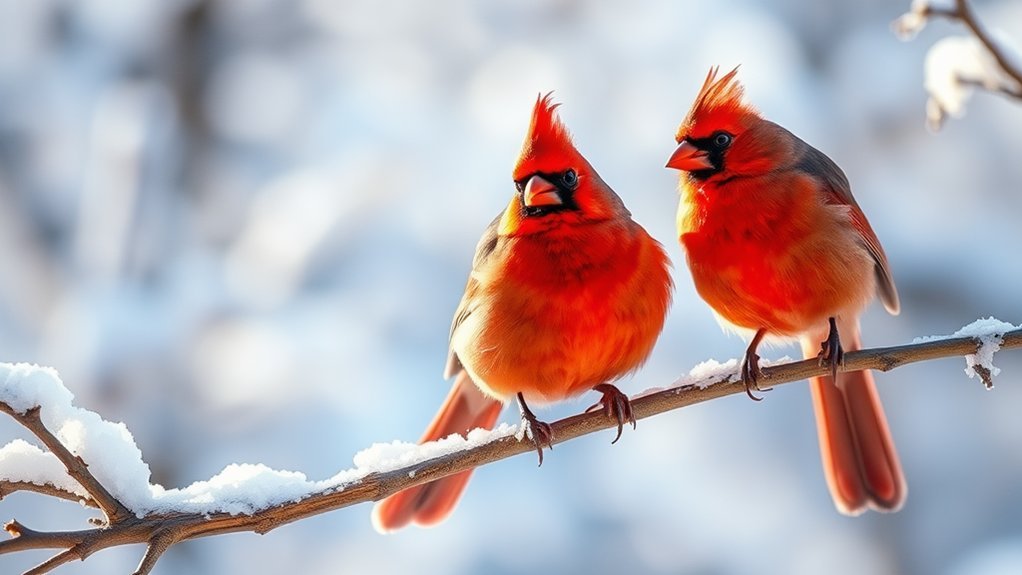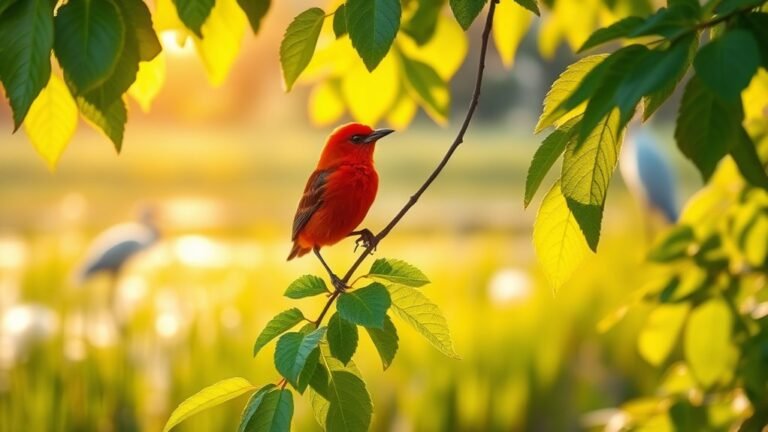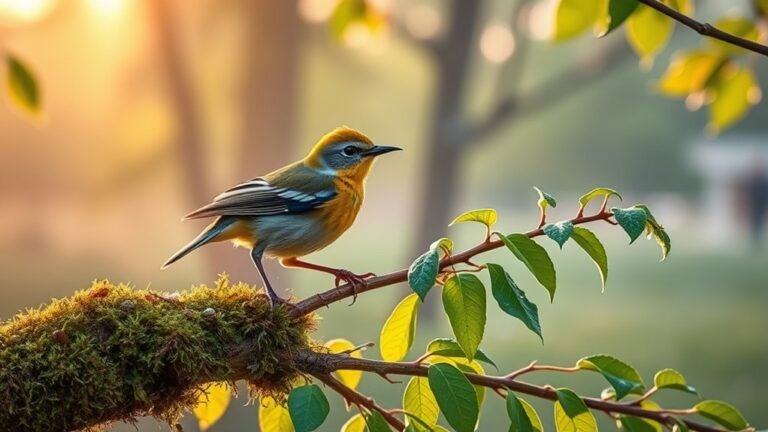Small Birds With Red Heads: Complete Species List
Small birds with red heads are fascinating and diverse. Each species has unique features and behaviors. For example, the Red-headed Woodpecker stands out with its vibrant head and striking appearance. Similarly, the House Finch is known for its adaptability and social nature.
These birds play important roles in their environments. They help control insect populations, disperse seeds, and contribute to the food web. Learning about their characteristics and habitats enhances your understanding of bird life.
By observing these species, you can appreciate their beauty and significance in nature. The more you discover, the more you will enjoy the rich diversity of small birds with red heads.
Key Takeaways
- The Ruby-crowned Kinglet has a hidden ruby crown that shows up during displays. It often lives in forests and gardens.
- House Finches have bright colors, especially the males. They can be found in cities and often live in flocks.
- The Red-headed Woodpecker stands out with its bright red head. It lives in open woodlands and parks across North America.
- The Northern Cardinal is known for its bright red feathers. It eats seeds, fruits, and insects, mostly in suburban areas.
- The Red Crossbill has a special adaptation with crossed bills for feeding. It usually stays in coniferous forests.
Northern Cardinal

The Northern Cardinal, a striking songbird native to North America, boasts a vibrant red plumage that captivates birdwatchers and enthusiasts alike.
You'll find this bird thriving in a variety of northern cardinal habitats, including suburban gardens, parks, and woodlands. Their adaptability to different environments allows them to flourish across diverse landscapes.
As for the northern cardinal diet, you'll discover that these birds primarily consume seeds, fruits, and insects. Their beak, robust and conical, is perfectly designed for cracking seeds, highlighting their specialized feeding behavior.
Observing them can deepen your appreciation for their role in the ecosystem, where they contribute to seed dispersal and plant propagation.
Engaging with their habitat can foster a sense of connection and community among fellow bird lovers.
Red-headed Woodpecker
With its striking crimson crown and bold black-and-white plumage, the Red-headed Woodpecker stands out among North America's diverse avifauna.
You'll typically find this species in open woodlands, parklands, and along the edges of forests. Their adaptable red headed woodpecker habitat allows them to thrive in areas with a mix of trees and open grassy spaces.
As for their feeding habits, these woodpeckers are known for their unique strategy of catching insects in mid-air, often diving from perches. They primarily consume beetles, ants, and fruits, showcasing their versatile diet.
Notably, they store food in tree crevices for later use, demonstrating their intelligence. Observing these remarkable birds enhances your connection to nature and deepens your appreciation for avian diversity.
House Finch

Although often seen as a common backyard visitor, the House Finch possesses a fascinating array of characteristics that contribute to its appeal.
You'll notice their striking color variations, with males displaying vivid red plumage on their heads and chests. When observing House Finch behavior, you'll find they're social birds, often foraging in small flocks and chirping melodiously.
Their adaptable nature allows them to thrive in urban environments, but they also prefer shrubby areas, gardens, and open woodlands for their habitat.
You might observe their unique nesting habits, as they readily utilize human structures for building, showcasing their resourcefulness.
Understanding these traits can deepen your appreciation for this charming yet complex species in your own backyard.
Ruby-crowned Kinglet
House Finches may dominate backyard bird feeders, but the Ruby-crowned Kinglet offers its own unique allure. These petite birds exhibit fascinating behavioral traits, like their frenetic foraging and agile aerial maneuvers.
Their habitat preferences lean toward dense underbrush and coniferous forests, creating a cozy environment you might find inviting for your own sanctuary.
To appreciate the Ruby-crowned Kinglet, consider these intriguing aspects:
- Males boast a vibrant ruby crown, often hidden until they display it.
- Their song is a delightful, rapid series of notes, echoing through your garden.
- They're highly active, fluttering among branches and leaves.
- Their social nature fosters connections with other small birds.
Engaging with these enchanting creatures can enrich your outdoor experience.
Red Crossbill

While you may be accustomed to watching common backyard birds, the Red Crossbill presents a fascinating study in adaptation and specialized feeding habits. This bird thrives in coniferous forests, where it expertly navigates its habitat to extract seeds from cones, specifically those of pines, spruces, and firs.
The unique crossed mandibles of the Red Crossbill are perfectly adapted for this task, demonstrating remarkable Red Crossbill behavior in action. Observing these birds reveals their social structure; they often gather in flocks, communicating with a range of calls that allow them to coordinate feeding.
Understanding their ecological role helps you appreciate the intricate relationships within their habitat, fostering a deeper connection with the avian world.
Pine Grosbeak
As you observe the Pine Grosbeak in its natural habitat, you'll notice its striking plumage and gentle demeanor, traits that underscore its role as a seed specialist in northern forests.
The Pine Grosbeak primarily thrives in coniferous woodlands, where its behavior reveals a few key aspects:
- They forage mostly on seeds from conifers, showcasing remarkable agility.
- Their social nature fosters strong flocking behavior during winter months.
- Males exhibit vibrant red hues, especially during mating seasons.
- They communicate with soft, melodic calls that resonate through the trees.
Understanding these elements of Pine Grosbeak behavior enhances your appreciation for how this charming bird contributes to its unique habitat, creating a sense of connection in your observations.
Purple Finch
The Purple Finch captures attention with its vibrant plumage, particularly in males, who display a striking raspberry-red hue on their heads and breasts during the breeding season.
This colorful bird exhibits distinct purple finch behavior, often foraging in flocks and feeding on seeds, berries, and insects. You'll find them in a variety of habitats, including dense coniferous forests, shrubby areas, and even well-tended gardens where food is abundant.
Their songs are melodious, characterized by varied notes that reflect their lively nature. As you observe them, you'll appreciate their adaptability and social structure, which fosters a sense of community among the flock.
This connection to their habitat and each other underscores their role in the ecosystem, emphasizing their importance in our natural world.
Frequently Asked Questions
Where Can I Find Small Birds With Red Heads?
To find small birds with red heads, visit birdwatching spots like wetlands and forests. Look for them in areas with native shrubs and trees. These places are where they search for food and build nests. Enjoy your birdwatching by observing their natural behavior in these habitats.
What Do Small Red-Headed Birds Eat?
Small red-headed birds eat seeds, fruits, and insects. Their food choices depend on their species and environment. Each bird adapts its diet based on what is available in its habitat and the time of year. This helps them thrive in different situations.
Are Red-Headed Birds Aggressive Towards Each Other?
Red-headed birds display strong territorial behavior, especially during mating season. They can act aggressively to defend their territory from other birds. This behavior helps them secure a space for breeding, ensuring their chances of reproductive success. Observing these birds can reveal fascinating insights into their instinctual drives.
Do These Birds Migrate, and if So, When?
Yes, these birds migrate. Their migration occurs during specific seasonal changes. In winter, they usually move south to warmer areas. This migration helps them adapt to environmental conditions and ensures their survival and reproduction.
How Can I Attract Small Red-Headed Birds to My Backyard?
To attract small red-headed birds to your backyard, set up bird feeders filled with seeds they like. Use native plants to offer natural shelter and food. This creates a friendly space that encourages them to visit regularly. Enjoy watching these vibrant birds in your garden!

Kashvi is a passionate bird enthusiast and nature lover who has been fascinated by the world of birds for years. With a keen eye for detail and a love for learning, Kashvi is dedicated to sharing her knowledge and insights with fellow bird enthusiasts on Avian Enthusiasts. Through her engaging and informative articles, Kashvi aims to inspire others to join her in exploring the fascinating world of birds and to promote a deeper appreciation for these incredible creatures.







